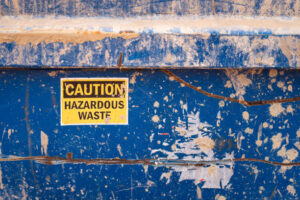As a business owner, managing waste efficiently is crucial for maintaining a clean, safe, and compliant workplace. Commercial trash removal services have evolved far beyond simple garbage pickup, offering comprehensive solutions that can significantly impact your bottom line and environmental footprint. Understanding what to expect from these services will help you make informed decisions that benefit your business operations and long-term sustainability goals.
The Growing Commercial Waste Management Industry
The commercial waste management sector is experiencing unprecedented growth. The global waste management market size was estimated at USD 1,424.35 billion in 2024 and is projected to reach USD 2,365.14 billion by 2033, growing at a CAGR of 5.9% from 2025 to 2033. In the United States specifically, the U.S. waste management market size was estimated at USD 342.7 million in 2023 and is expected to grow at a compound annual growth rate (CAGR) of 5.2% from 2024 to 2030.
This growth is driven by several factors, including increasing urbanization, stricter environmental regulations, and growing awareness of sustainability practices among businesses. The estimated number of workers employed in “waste management and remediation services” in November 2024 was up 20,000 from November 2023, indicating robust industry expansion.
Core Commercial Trash Removal Services
Regular Waste Collection
The foundation of commercial trash removal is scheduled pickup services. The collection segment leads the global waste management market in 2024 and accounted for a 61.8% share, due to the essential need for regular waste removal across residential, commercial, and industrial sectors. Most providers offer flexible scheduling options:
- Daily pickup: Ideal for restaurants, healthcare facilities, and high-volume businesses
- Weekly pickup: Standard for most offices and retail establishments
- Bi-weekly or monthly: Suitable for smaller businesses with minimal waste generation
Commercial trash collection typically occurs once a week, with bulk pickup available as requested and emergency trash collection available 24/7 on standby, including holiday trash collection scheduled on Thanksgiving, Christmas, and New Year’s.
Container Options and Sizing
Commercial trash removal services provide various container sizes to accommodate different business needs:
- 2-yard dumpsters: Hold 400 lbs and are best for small restaurants and companies with up to 25 employees
- 4-yard dumpsters: Hold 800 lbs and are best for midsize restaurants and companies with up to 100 employees
- 6-yard dumpsters: Hold 1,200 lbs and are best for midsize to large businesses with up to 250 employees
- 8-yard dumpsters: Hold 1,800 lbs and are best for large businesses with up to 500 employees
Recycling Services
Modern commercial waste management emphasizes sustainability and regulatory compliance. One pick-up of recycling per week is typically included with trash service, though additional pickups may incur extra charges. Many providers offer comprehensive recycling programs for:
- Paper and cardboard
- Plastics and metals
- Electronics (e-waste)
- Organic waste and composting
Specialized Waste Management
Beyond standard trash collection, commercial services often include:
- Hazardous waste disposal: Following strict regulatory protocols
- Medical waste management: For healthcare facilities and laboratories
- Construction and demolition debris: For renovation and construction projects
- Confidential document shredding: Ensuring data security compliance
Cost Structure and Economic Benefits
Understanding the cost structure of commercial trash removal helps businesses budget effectively and identify potential savings. The cost for disposing of general commercial waste ranges from $20 to $100+ per ton, while hazardous waste can cost anywhere from $50 to $500 per ton to dispose of, depending on the waste’s nature and the treatment required.
Factors Affecting Pricing
Several key factors influence commercial waste management costs:
- Volume and weight of waste generated
- Pickup frequency requirements
- Geographic location and accessibility
- Type of waste materials
- Special handling requirements
- Container size and type
Cost-Saving Opportunities
Effective waste management can generate significant cost savings for businesses. Increased recycling can cut your disposal costs and improve your bottom line. Diverting any level of waste from your trash bin is a quick and easy way to lower hauling costs, as trash disposal costs are directly linked to how often your business requires pick-ups, as well as your total volume of waste.
Additionally, the average cost of commercial waste disposal has increased by 20% in the past five years, and this trend is expected to continue, making efficient waste management even more critical for controlling operational expenses.
Revenue Generation Through Recycling
Some recycling initiatives can actually generate revenue for businesses. Outside of cutting waste management costs, some recycling initiatives can even make businesses money, as it’s likely that a lot of the waste your business produces can be sold to recycling facilities as a means of extra revenue. Valuable recyclable materials include:
- Paper waste including scrap paper, office paper, and cardboard
- Scrap metal, including aluminum, copper, and steel
- Old electronic devices, both whole and disassembled for parts
Regulatory Compliance and Legal Requirements
Commercial waste management operates within a complex regulatory framework that businesses must navigate carefully. Commercial businesses face a maze of regulations when it comes to managing waste and recycling. These rules are crucial for protecting the environment and public health, but they can also present significant challenges for businesses. Understanding and complying with these regulations is essential to driving sustainability and avoiding damage to your bottom line.
Federal Regulations
At the federal level, the primary regulatory framework for waste management is the Resource Conservation and Recovery Act (RCRA). The RCRA governs the disposal of hazardous waste from “cradle to grave,” including its generation, transportation, treatment, storage, and disposal.
Key federal requirements include:
- Proper waste identification and classification
- Obtaining EPA Hazardous Waste Identification Numbers when required
- Following specific storage, labeling, and transportation protocols
- Maintaining detailed documentation and records
- Using only licensed waste haulers and approved facilities
State and Local Regulations
Many states, including California, New York, and Washington, have additional waste compliance laws that go beyond federal regulations. Businesses operating across multiple states must stay informed about regional differences in waste management laws.
Consequences of Non-Compliance
Beyond financial penalties, improper waste management can result in environmental contamination, which can lead to lawsuits, community backlash, and additional cleanup costs. Businesses need to prioritize waste compliance not just to avoid legal repercussions but also to strategically position themselves as responsible corporate citizens.
Environmental and Sustainability Benefits
Modern commercial trash removal services prioritize environmental responsibility and sustainability. Waste prevention offers the greatest environmental benefits and cost savings. Organizations can modify their current practices to reduce the amounts of waste generated by changing the design, manufacture, purchase, or use of materials or products.
Carbon Footprint Reduction
Proper waste management and recycling can significantly reduce a business’s environmental impact. A company that increased recycling rates from 30% to 50% helped save an additional 50,000 metric tons of CO2 per year, the equivalent of taking 11,000 cars off the road. Paper and paperboard recycling, at about 46 million tons, resulted in a reduction equivalent to removing over 33 million cars from the road for one year.
Waste Diversion Strategies
Effective commercial waste removal services implement the waste hierarchy:
- Reduce: Minimizing waste generation at the source
- Reuse: Finding alternative uses for materials before disposal
- Recycle: Converting waste materials into new products
- Recover: Energy recovery through waste-to-energy processes
- Dispose: Safe disposal as the last resort
Circular Economy Integration
A well-designed waste diversion program not only benefits the environment but can also lead to substantial cost savings. By implementing a well-designed program, you can significantly reduce waste disposal costs, generate new revenue streams, and minimize your environmental footprint.
Technology and Innovation in Commercial Waste Management
The industry is embracing technological innovations to improve efficiency and service quality. The waste management industry is witnessing significant innovation. Emerging trends include the use of AI and robotics for waste sorting, blockchain-powered solutions for tracking material lifecycle, and innovative composting and advanced recycling.
Smart Waste Systems
Modern providers offer:
- IoT-enabled containers: Sensors that monitor fill levels and optimize pickup schedules
- Route optimization software: Reducing fuel consumption and improving efficiency
- Digital tracking systems: Real-time monitoring of waste streams and compliance
- Mobile apps: Easy service management and reporting capabilities
Data Analytics and Reporting
Advanced commercial waste removal services provide detailed analytics including:
- Waste generation patterns and trends
- Recycling rates and diversion metrics
- Cost analysis and optimization recommendations
- Compliance reporting and documentation
- Sustainability impact measurements
Choosing the Right Commercial Waste Removal Service
When selecting a commercial waste removal provider, consider these key factors:
Service Reliability and Coverage
Providers should ensure timely trash pickup and consistent service with convenient pickup times and reliable service. Verify their service area coverage and backup plans for equipment failures or weather-related disruptions.
Comprehensive Service Offerings
Look for providers that offer:
- Multiple container sizes and types
- Flexible pickup schedules
- Recycling and composting programs
- Specialized waste handling capabilities
- Emergency and on-demand services
Regulatory Expertise
Your chosen provider should demonstrate thorough understanding of applicable regulations and maintain all necessary licenses and certifications. They should also provide guidance on compliance requirements specific to your industry and location.
Sustainability Commitment
Choose providers with strong environmental credentials, including:
- High waste diversion rates
- Investment in clean technology
- Transparent sustainability reporting
- Partnerships with certified recycling facilities
Cost Transparency and Value
The information you get can help you negotiate for (cheaper) waste and recycling services that better fit your needs. Ensure your provider offers:
- Clear, itemized pricing
- No hidden fees or surprise charges
- Flexible contract terms
- Regular service reviews and optimization
Future Trends and Considerations
The commercial waste management industry continues to evolve rapidly. Key trends to watch include:
Extended Producer Responsibility (EPR)
Five states now have EPR for packaging laws after Minnesota passed its own earlier this year, with 2024 being a year for detailed EPR implementation processes in the other four states. These regulations will increasingly shift responsibility for packaging waste to manufacturers.
Circular Economy Focus
With many companies switching to zero waste by 2030, there will be an even greater incentive to recycle and use proper waste management services in order to preserve our world’s future environment.
Advanced Recycling Technologies
Investment in new recycling technologies is growing, with ExxonMobil announcing it will invest in expanding its chemical recycling operations in Baytown and Beaumont, Texas, expected to open in 2026.
Conclusion
Commercial trash removal services have evolved into comprehensive waste management solutions that offer significant value beyond simple garbage pickup. With the industry experiencing robust growth and increasing regulatory complexity, partnering with the right service provider is more critical than ever.
Businesses that invest in quality commercial waste removal services can expect improved operational efficiency, regulatory compliance, cost savings, and enhanced sustainability credentials. As environmental regulations continue to tighten and consumer expectations for corporate responsibility grow, effective waste management will become an increasingly important competitive advantage.
By understanding what to expect from commercial trash removal services and carefully evaluating potential providers, businesses can make informed decisions that support their operational goals, financial objectives, and environmental commitments. The investment in professional waste management services typically pays dividends through reduced costs, improved compliance, and enhanced corporate reputation.
Whether you’re a small business just starting to formalize your waste management approach or a large enterprise looking to optimize existing services, the commercial waste removal industry offers sophisticated solutions designed to meet your specific needs while supporting broader sustainability goals.
References
- U.S. EPA – National Overview: Facts and Figures on Materials, Wastes and Recycling
- Grand View Research – Waste Management Market Size & Industry Report, 2033
- U.S. EPA – Managing and Reducing Wastes: A Guide for Commercial Buildings
- Energy Star – Waste Tracking and Management in Commercial Buildings
- Waste Dive – By the numbers: 2024 waste and recycling trends













